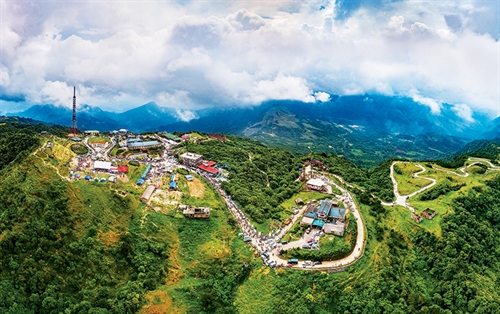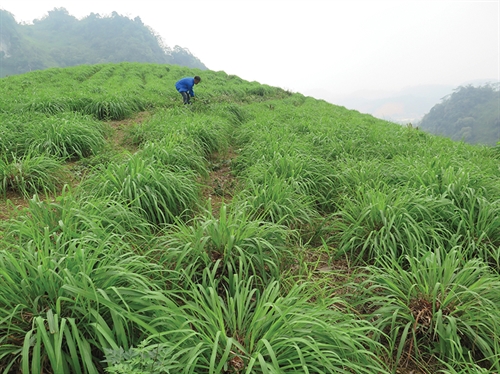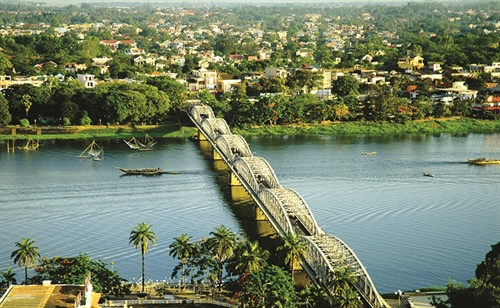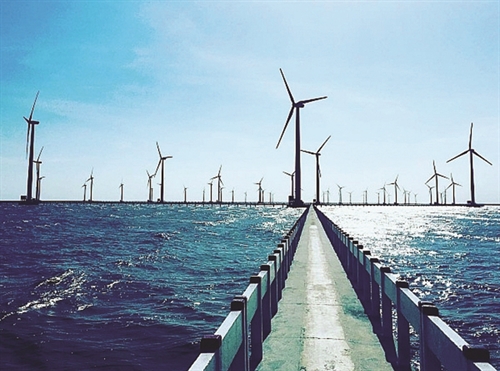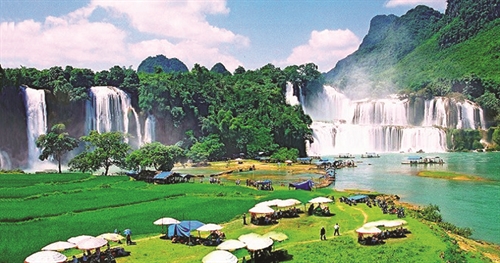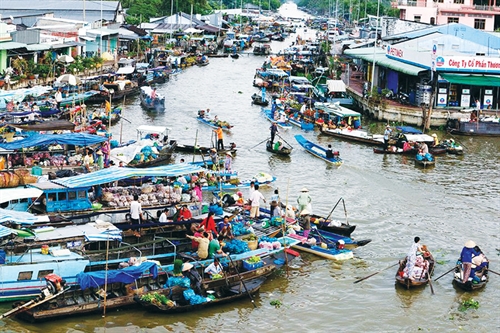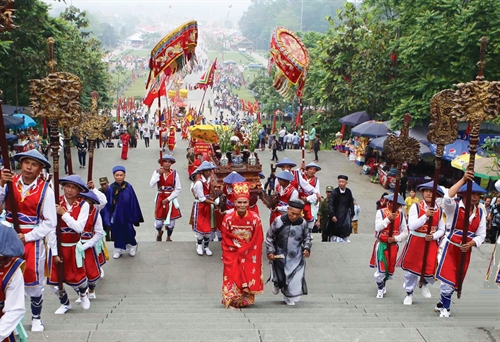Chairman of Ca Mau People’s Committee Nguyen Tien Hai has affirmed that the provincial authorities are ready to remove obstacles and difficulties for businesses and entrepreneurs. Ca Mau warmly welcomes sincere opinions and whole-hearted recommendations from enterprises and investors toward building an attractive local image and ideal investment destination, he stressed.
Located in the southern tip of Vietnam, Ca Mau is the only province in Vietnam that is surrounded by the sea on three sides with a coastline of 254km. It borders Kien Giang province to the north, Bac Lieu province to the northeast, the Gulf of Thailand to the west and south, and the East Sea to the east. Covering some 5,290 square kilometers, the province has a population of around 1.3 million people with Kinh (Viet) being the most populous, the Khmer and 12 other ethnic minorities. It has a provincial city with the same name, and eight districts of Cai Nuoc, Tran Van Thoi, Ngoc Hien, U Minh, Nam Can, Dam Doi, Phu Tan, and Thoi Binh.
As one of the four provinces and city in the Mekong River delta key economic region, Ca Mau serves as a pillar in the delta’s “driving-force quadrangle” and boasts great potential for development, particularly in aquaculture, aquatic product processing, tourism and gas-power-nitrogenous fertilizer industry. However, the province is also vulnerable to impacts of climate change, including sea level rise.
With only one daily flight from Ca Mau city to Ho Chi Minh City, Ca Mau airport will have its capacity doubling to as many as 1 million passengers a year by 2030.
Prime Minister Nguyen Xuan Phuc has recently requested Ca Mau authorities to approve the project on construction of the Can Tho-Ca Mau expressway which, he said, would play an extremely important role in provincial development. He has also given green light to the province’s utilization of private funds to build Hon Khoai port, which is expected to help the province’s economy to take off.
The Government leader has suggested Ca Mau should consider science and technology, particularly biotechnology and new technologies suitable to local conditions, as the key to its integration and development.
Ca Mau should focus on developing hi-tech business models, especially in tourism, and boost e-commerce in agricultural product trading, he said.
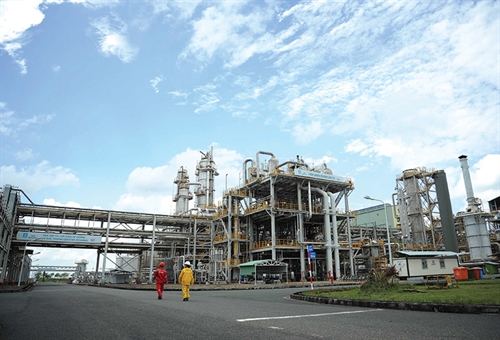 |
| Petro Vietnam Ca Mau fertilizer plant in Ca Mau province__Photo: Huynh The Anh/VNA |
Investment potential and opportunities
To date, Ca Mau is home to one economic zone (EZ) and three industrial parks (IPs). Located along National Highway 1A, the 11,000-ha Nam Can EZ boasts mechanical engineering, shipbuilding industry, machine assembly, electronics, seafood processing and garment and textile.
The three IPs include 235.96-ha Khanh An IP in U Minh district that accommodates chemical, fertilizer, construction material production and timber processing enterprises; 326-ha Hoa Trung IP in Cai Nuoc district that houses seafood processing, animal feed and service businesses; and 45.45 ha Song Doc IP in Tran Van Thoi district that attracts seafood processing, marine service, warehousing and ship-repair firms.
Ngo Van Huynh, deputy head of the external economics section of the Ca Mau Planning and Investment Department, told the Vietnam Law and Legal Forum magazine that the province currently hosts 10 foreign direct investment projects totaling more than USD 393.6 million. They include four Vietnam-Australia joint-venture projects specialized in tourism, aquatic animal breed production and shrimp farming, Thailand-Vietnam super wind power projects and Vietnam-Taiwan (China) seafood processing plant project.
According to Director of the Ca Mau Planning and Investment Department Huynh Quoc Viet, the province has failed to attract large projects to IPs, agriculture, tourism and other spearhead sectors due to slow economic and agricultural restructuring, incomplete infrastructure and shortcomings in human resource training and administrative procedure reform.
To become an ideal destination for domestic and foreign investors, Ca Mau province is striving to raise its provincial competitiveness index (PCI) ranking and shorten the time for granting investment registration certificates.
To that end, the province has established the center for settlement of public administrative procedures and the investment promotion and enterprise support center.
In order to attract more investors, the provincial administration has offered investors with numerous incentives. Investment projects (except manufacturing projects liable to excise tax and mining projects) in Ca Mau city are eligible for a 17-percent corporate income tax for 10 years while those to be implemented in rural districts and islands will enjoy a 10-percent corporate income tax for 15 years. Projects on the list of special investment priority sectors in Ca Mau city will be exempted from land rental for 15 years while those in rural districts and islands will enjoy land rental exemption throughout their operation duration.
Ca Mau is calling for investment in developing and exploiting sea and island tours in Ngoc Hien district and ecological tours in U Minh district and Bac Ba Phi relic tours in Tran Van Thoi district. A 1,050-ha hi-tech vegetable zone and a 10,530-ha ecological shrimp farming area; and the construction of a 3.6-ha seafood and timber processing plant, a 19.23-ha fisheries logistics service and shipbuilding zone as well as trade-service zones in Ca Mau city and Tran Van Thoi, U Minh, and Ngoc Hien districts are also calling for investment.
Moves to lift local tourism image
Ca Mau is known for its ending point of the S-shaped country - Ca Mau cape - the only place in Vietnam where people can see both sunrise and sunset over the sea. With a dense network of rivers and canals, Ca Mau is home to U Minh Ha (lower U Minh) national park which is one of the three wetland conservation sites in the Mekong River delta recognized by UNESCO as one of three core zones of Ca Mau Cape World Biosphere Reserve. There are two types of forests in Ca Mau: mangrove and cajeput forests which are ideal for scientific research and ecological tours. The province is also famous for Thi Tuong lagoon and its bird sanctuaries, including Lam Vien in Ca Mau city, Cha La in Cai Nuoc district and Ngoc Hien in Ngoc Hien district. Together with Ca Mau floating market and Khai Long beach, Hon Da Bac (silver rock) and Hon Khoai (potato-shaped) islands are among must-see tourist sites.
The province is home to 18 traditional craft villages making fish sauce, dried fish, sedge mats, chopsticks and other products. The Nghinh Ong (whale worshipping) festival of the Cham to pray for fair winds and following seas, luck and prosperity and the festival for Lady Thien Hau of the Hoa to pray for prosperity, health and luck help enrich the province’s culture.
According to the Ca Mau Culture, Sports and Tourism Department, the province received 1.7 million tourist arrivals, including 29,000 foreigners, and earned a turnover of over VND 2.6 trillion in 2019.
Also in 2019, it successfully organized the Ca Mau Culture-Tourism Week with a series of activities such as a trade and tourism fair, a cuisine festival and the first Mekong Delta amateur cai luong (reformed opera) contests. The inaugural ceremony of significant tourist works, namely Ca Mau cape with the end of Ho Chi Minh road, Ca Mau cape flagpole, Lac Long Quan temple, and Mother statue, is also included in the week.
During the lunar new year (Tet) festival, the province welcomed 160,800 visitors, including 745 foreigners.
However, the number of foreign visitors remained modest as the locality still sees many limitations in transportation.
Hoang Thanh Quy, CEO of Hai Au Aviation, a member of Thien Minh Group, pointed out such limitations, saying that only 20 percent of the Ca Mau airport’s capacity is being exploited with one return flight to Ho Chi Minh City per day. In the meantime, it takes five to six hours to go by coach from Ho Chi Minh City to Ca Mau city. At present, there are only small boats taking passengers from Can Tho city to Ca Mau city, he added.
To lure more foreign holiday makers, Peerapol Triyakasem, President of Thailand’s Virgo Solution Tourism Company, suggested Ca Mau should pay attention to developing road, sea and air transport synchronously as well as marine tourism.
Director of Vietcircle tour operator Phan Dinh Hue - a Mekong River delta tourism development consultant, said that Ca Mau will cooperate with shipping lines to opening routes linking Phu Quoc island and Cambodia and Thailand by 2025.
Ca Mau is now interested in boosting tourism development connection with other localities in the Mekong River delta, Ho Chi Minh City and Hanoi as well as Trat province (Thailand), Khammouane province (Laos) and Koh Kong province (Cambodia).
The province expects to receive 1.8 million tourist arrivals this year.-
